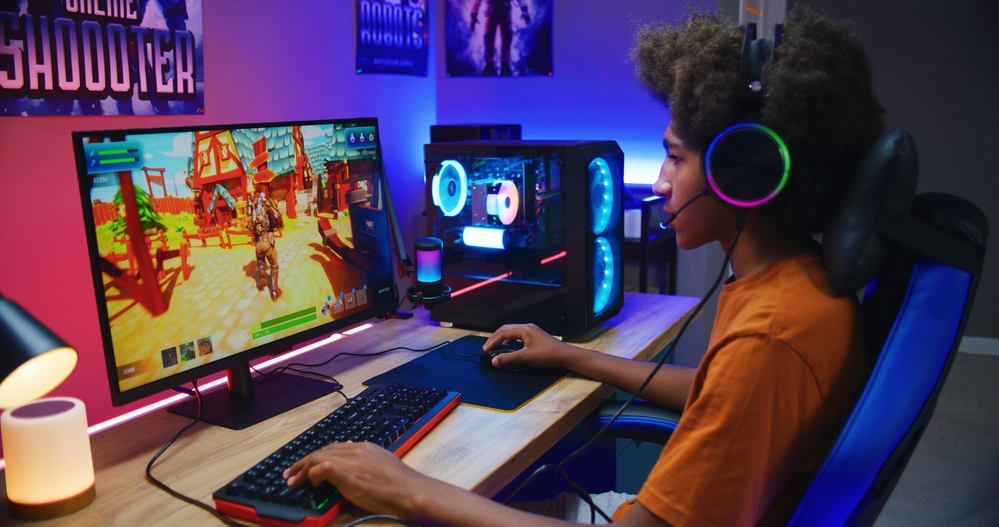
In the Bodoni font era, online play has evolved far beyond simple pixelated diversions. It s now a sprawl whole number universe where millions of players interact, compete, and cooperate in real-time. But behind the immersive nontextual matter, smooth gameplay, and instant lies an complex web of engineering the code behind the restrainer that powers this vast . Understanding how applied science fuels online play reveals a enthralling intersection of software program engineering, network infrastructure, and thinning-edge innovations.
The Foundation: Game Engines and Programming Languages
At the heart of every online game is the game a unrefined software theoretical account that handles rendering, natural philosophy, sound, scripting, and stimulation processing. Popular engines like Unity, Unreal Engine, and custom-built frameworks supply developers the tools to make expansive virtual worlds. These engines rely on programing languages such as C, C, and Python to direct the game system of logic.
For example, C is widely favored for its public presentation efficiency, crucial for real-time reactivity and complex calculations. Scripting languages like Lua or JavaScript often complement these to wangle game events and interactions dynamically. The allows developers to build intricate gameplay mechanism that can surmount from moderate indie games to massive multiplayer online games(MMOs).
Networking: The Backbone of Multiplayer Interaction
One of the most stimulating aspects of online play applied science is networking. Multiplayer games require unbroken, low-latency between players and game servers spread intercontinental. This is effected through protocols like TCP(Transmission Control Protocol) and UDP(User Datagram Protocol).
TCP ensures dependable data transmittance but can introduce rotational latency due to wrongdoing checking and packet retransmission, making it less nonsuch for fast-paced games. UDP sacrifices some reliability for speed up, allowing real-time synchronization of player actions, which is essential for shooters or racing games. Hybrid approaches often immingle both to poise truth and reactivity.
Behind the scenes, server computer architecture plays a key role. Dedicated game servers handle participant connections, manage game submit, and impose rules to see blondness. Cloud computing platforms such as AWS, Google Cloud, or Microsoft Azure provide climbable resources to dynamically allocate waiter superpowe based on player demand, reducing lag and downtime.
Synchronization and State Management
Maintaining synchronizin between thousands of players in an online earth is no modest feat. The game must perpetually update each player s put together, actions, and environment changes across the network. Techniques like node-server models and peer-to-peer networking are used to distribute this load.
The client-server model is prevailing, where the important game server maintains the true game submit, and clients send stimulation,nds and welcome updates. To minimise rotational latency personal effects, developers put through forecasting algorithms, such as node-side forecasting and lag , which anticipate participant movements and smooth over out discrepancies caused by network delays.
Security and Anti-Cheat Systems
Online play s popularity makes it a prime place for cheating and hacking. Robust surety measures are cooked into the code to protect game unity. Encryption protocols safe-conduct channels, while assay-mark systems verify legitimatize users.
Anti-cheat software package employs simple machine scholarship and heuristic depth psychology to detect immoderate player behaviour, such as aimbots or speed hacks. Continuous updates and community reportage help patch vulnerabilities and ban offenders, ensuring fair play.
The Role of Artificial Intelligence and Machine Learning
AI enhances online play in several dimensions. Non-player characters(NPCs) employ AI algorithms to realistic conduct and take exception players. Procedural content generation where AI creates environments, levels, or items dynamically adds variety and extends gameplay seniority.
Machine erudition also aids matchmaking systems by analyzing participant science, preferences, and conduct to make balanced and gratifying matches. This personalization fosters participant retentivity and involvement.
Future Trends: Cloud pak game and Beyond
Cloud gaming is reshaping the technological landscape painting of online games. By streaming games from powerful remote control servers directly to users , cloud over gambling eliminates the need for high-priced hardware and allows second access. This relies on radical-low rotational latency networks and reconciling streaming technology, with companies like NVIDIA GeForce Now and Google Stadia pioneering the space.
Moreover, advancements in 5G and edge computing call to further tighten rotational latency and heighten real-time interactivity, making mobile and AR VR play more immersive and available.
Conclusion
The online play universe is a vibrant, ever-evolving digital frontier, made possible by a symphony orchestra of technologies and meticulous cryptography. From the game engines crafting virtual realms, to the networking protocols synchronization millions of players, and the AI systems personalizing experiences, every scene is engineered for seamless interaction and entertainment. As applied science continues to advance, the line between the virtual and real worlds will blur even further, promising richer and more dynamic online play experiences for eld to come.

